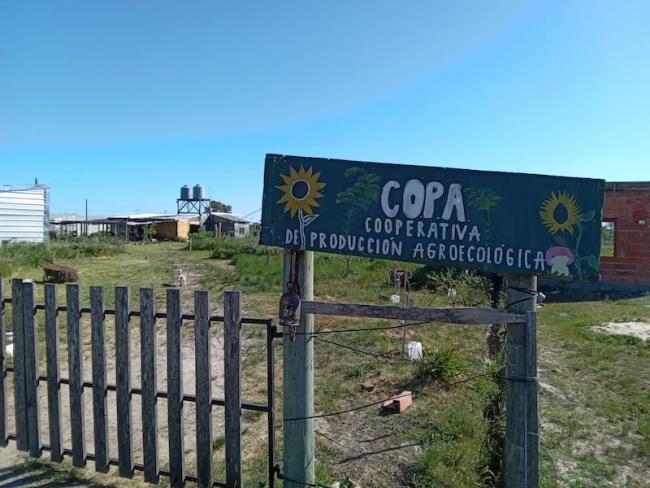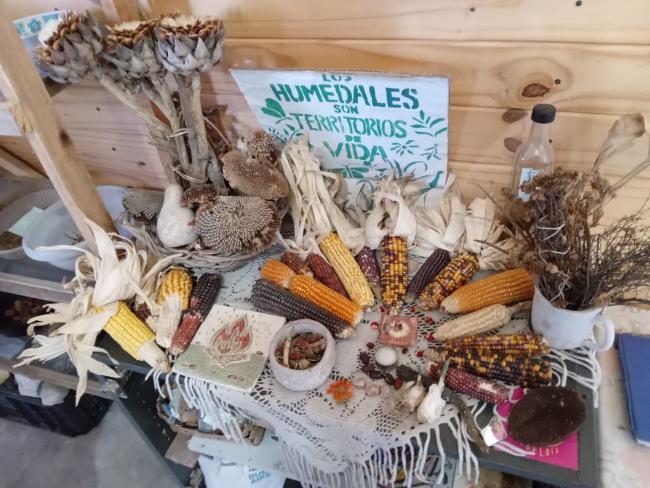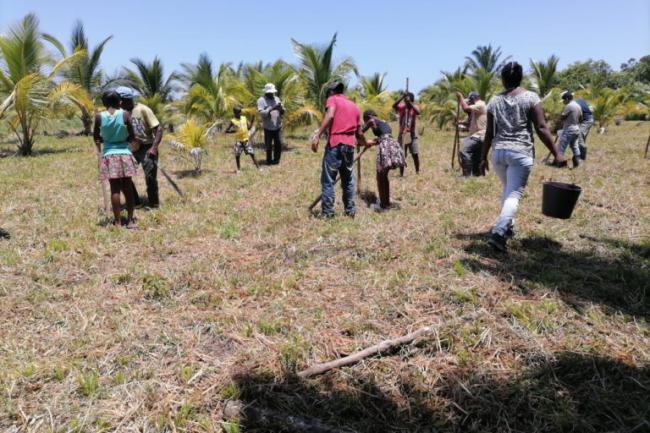
Translated from Spanish by Lucas Bricca.
This article was originally published in Portuguese by Teia Dos Povos.
When thinking about autonomies, Chiapas springs to mind, where the Zapatista movement has built an “other world.” The Zapatistas have all the characteristics of a truly distinct society: their own education and health systems based on criteria defined by the communities, as well as local, municipal, and regional power structures, agroecological farms, women’s cooperatives, their own justice system, collectively managed banks to support common projects, and a communal army to defend it all. In short, it’s a world that moves and breathes; it’s comprehensive, diverse, and in resistance to capitalism.
I propose we look at what is happening in Latin America from below. A brief overview shows that, in addition to the traditional currents of systemic reform (reaching government through electoral means) and revolution (taking the same path but through insurrection or guerrilla methods), we must add a third current: the autonomies that have unfolded over the last 30 years.
I prefer to refer to them in the plural because they are not identical; they do not have the same characteristics, trajectories, or governing bodies. Autonomies are the paths forged by some Indigenous and Black peoples, peasants, and traditional communities.
There are also many urban experiences, where families from popular sectors have secured land and built both homes and neighborhoods. The Acapatzingo Housing Community in Mexico City is one of nine projects by the Francisco Villa Independent Leftist Popular Organization, which houses more than a thousand families. There are also self-managed popular neighborhoods in Chile, Uruguay, Peru, Colombia, and many other places yet to be discovered.
While the Zapatista autonomies are all-encompassing, addressing all aspects of life from food sovereignty to self-care and self-governance, not all autonomous experiments are the same. Some focus solely on education based on Paulo Freire’s teachings; others emphasize community health; others have some autonomous traits or sectors but are not comprehensive autonomies. There are also collectives that define themselves as autonomous but receive government funding. Here, autonomy means they manage what they receive according to their own criteria, without government control.
I have described these practices as “gray areas” to include experiences that are not entirely autonomous but possess important autonomous traits and are positioned to advance towards more comprehensive autonomous movements.
Finally, autonomy is not an institution or an endpoint but an ongoing process that must be constructed every day to avoid becoming dependent on the state or capital. We all know movements that have abandoned their anti-capitalist stance, which should make us reflect on the fact that process is more important than the fixed form in which autonomies are sometimes presented.
The Amazon as a New Arena of Autonomy
Since 2015, the Autonomous Territorial Government of the Wampis Nation has been operating in northern Peru, encompassing 15,000 inhabitants across 22 communities and over a million hectares (2.5 million acres) in a region bordering Ecuador. Up to nine Amazonian peoples are following the same path, while six others are in the process of establishing themselves as governments.
The goal of these projects is to control ancestral territory and stop extractivist invasion. This is what the Wampis, Awajún, Chapra, Shawi, Kokama, Inga, and others, which form the nine autonomous governments spanning about 10 million hectares in the Amazon, have been doing. Additionally, there is an ongoing dialogue with the southern Amazonian peoples on the border with Brazil, particularly the Shipibos, who are discussing autonomy but with characteristics quite different from those in the north.

The “Baguazo” of 2009 brought visibility to their agenda of reclaiming Indigenous identities, defending their territorial spaces, and establishing themselves as collective subjects in the face of systematic contempt from the state. The Baguazo was the rebellion of the Awajún and Wampis peoples against mining and oil extractivism, marked by a large road blockade that led to a confrontation with the police and the deaths of dozens of Indigenous people and state agents.
The Baguazo convinced the Amazonian peoples that negotiation with the state was impossible and led to the strengthening of autonomous governments to carry out the historical agendas of their communities.
The pace and methods of each pueblo vary, but all are part of the Regional Indigenous Peoples Coordinator (CORPI), and in a sense are part of the same process at different speeds. The most advanced autonomies are those of the Achuar in Pastaza, the Awajún, the Wampis, and the Chapra Nation, which are territorially close, according to Vladimir Pinto of Amazon Watch, who has advised and accompanied these processes for 20 years.
Ongoing Processes Toward Community Justice
The Nasa world of Cauca, Colombia, organized alongside eight other peoples under the Regional Indigenous Council of Cauca (CRIC), demonstrates what I call radical ambiguity. On the one hand, inequalities and capitalist and state-centric practices persist, but alongside them, the Indigenous Guard acts as the driver of change and the nucleus of Nasa autonomy. Its structure is simple: each hamlet elects ten guards and a coordinator. Then, a coordinator is chosen for each Indigenous territory and one for the entire region. In northern Cauca, there are 3,500 Indigenous guards across 18 cabildos, or councils, with authorities elected from the reserves.
The Indigenous guards do not function as a police force, but as community organizers, protectors, and defenders of life without involving themselves in warfare. Participation is voluntary, and neighbors and authorities help maintain the chosen guards' family gardens and sometimes organize collective work to plant and harvest.
Guards are evaluated yearly and can be replaced, as the organization relies on the rotation of all its members. The main task of the Indigenous Guard is community justice, aimed at restoring harmony and internal balance, rooted in the Nasa worldview and culture. This is distinct from state justice, which isolates and imprisons offenders. The guard defends the territory from the military, paramilitaries, and guerrillas who have killed and kidnapped hundreds of community members during Colombia’s ongoing war. In recent years, they have also protected the land from mining multinationals that pollute and displace populations.
In addition to promoting community formation and organization, members encourage food sovereignty, support community gardens, and hold reflection assemblies on “derecho propio,” the term for community justice. Every six months, guards participate in harmonization rituals led by traditional healers as a form of individual and collective cleansing.
The Indigenous Guard participated in Colombia’s 2021 national strike, which lasted more than two months. In addition to blocking the Pan-American Highway for several weeks, Colombia’s main transit route, the guard reached Cali, the center of the uprising, to support the youth being repressed and killed. Between 5,000 and 7,000 Nasa Indigenous guards, particularly the youngest members, were directly involved in the uprising. They did not go to lead or give orders but to accompany the mobilizations.
In 1993, the Black Communities Process was formed in Palenque, Alto Cauca, which now includes 140 grassroots organizations and community councils that aim to defend “their own political-organizational autonomy.” In 2009, the first Afrocolombian Cimarron Guard was created in Palenque, and in 2013, the first National Congress of Black Communities officially recognized the Guard.
In Honduras, 48 Garífuna communities on the Caribbean coast, grouped under OFRANEH (the Fraternal Black Honduran Organization), are working autonomously in key areas such as spirituality, food, and health. Ancestral Health Houses are considered a central organizing element of the Garífuna people. There are currently nine houses in operation, with plans to open four more. During the COVID pandemic up to 33 health centers were functioning, nearly one in each community.

Garífuna communities are diversifying food production, producing coconut oil in their own factory, and distributing it to the Health Houses and other communities. They try to avoid pharmaceutical industry medications and are multiplying “medicinal gardens,” managed by women, who are central to community care and spirituality. They are also building a large university, the Casa de los Saberes, in Vallecito, which will be key for sustaining a community besieged by extractivism and drug trafficking.
I could continue with the Mapuche processes in Chile and Argentina, where hundreds of communities resist militarism and extractivism. I could also talk about the 26 Consultation Protocols, territorial self-determination processes involving 64 Indigenous peoples and 48 territories in Brazil’s Legal Amazon, or the processes in southern Bahia that gave rise to the Teia dos Povos, a Web of Peoples formulated around building pathways towards collective liberation.
I chose to focus on the lesser-known experiences to give an approximate idea of the many processes toward autonomy, forming a reality that cannot be hidden, no matter how much leftist parties try to pretend we’re not there.
Raúl Zibechi is a writer, popular educator, and journalist. He has published 20 books on social movements and writes for several Latin American media outlets including, among others, La Jornada, Desinformémonos, Rebelión, and Correo da Cidadania.

